
Nave and sanctuary, Palatine Chapel, Norman Palace, Palermo, Sicily, Italy Manuel Cohen
The Norman Palace The Palatine Chapel Palazzo Abatellis (Galleria Regionale) The Palermo Cathedral San Cataldo San Giorgio dei Genovesi

Byzantinischen Mosaiken in der Cappella Palatina im Normannenpalast Könige, Palermo, Sizilien
The Palatine Chapel ( Italian: Cappella Palatina) is the royal chapel of the Norman Palace in Palermo, Sicily. This building is a mixture of Byzantine, Norman and Fatimid architectural styles, showing the tricultural state of Sicily during the 12th century after Roger I and Robert Guiscard conquered the island.
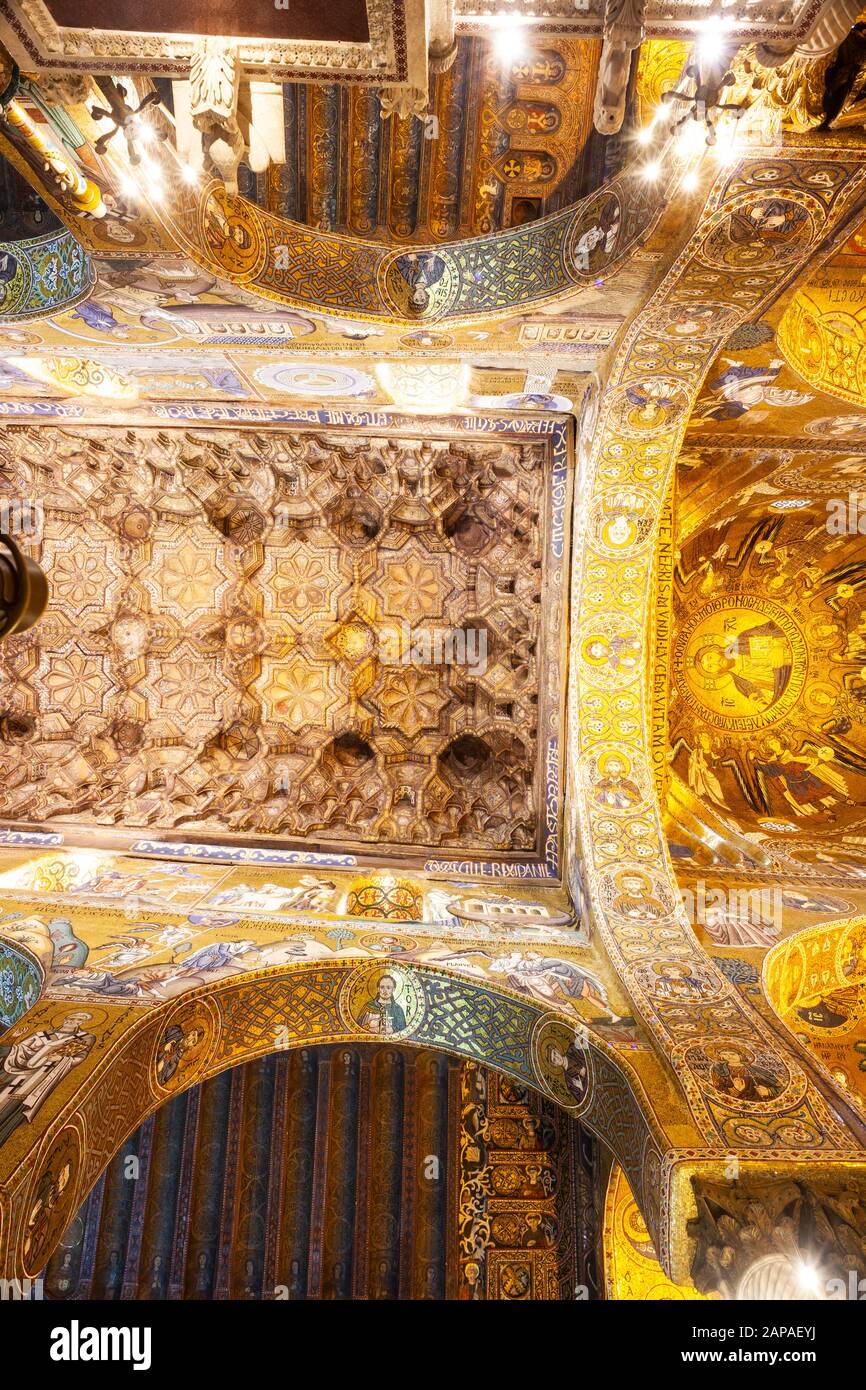
Shining ceiling of the Palatine Chapel. Royal chapel of the Norman palace in Palermo, mixture of
The Palatine Chapel in Palermo is a Byzantine style chapel built by the Normans in the 12th century, and famous for its beautiful mosaic decoration and artwork.. The Norman Kings wanted the best chapel possible for themselves, and King Roger II commissioned the Palatine Chapel inside the Royal palace in 1132.

The Palatine Chapel From The Norman Palace In Palermo Sicily Italy Fotografie stock e altre
It looks medieval, with a generous dose of the Baroque added over the centuries (and by 1400 the imposing Steri Castle was Sicily's official "royal palace") but Palermo's Norman Palace, with the Palatine Chapel as its centerpiece, is built - quite literally - on ancient foundations. Origins. If Palermo lacks a Romulus and Remus it can claim.

Internal Collonade Royal Chapel of the Norman Palace in Palermo Editorial Photo Image of
Discover the Royal Palace or The Norman Palace of Palermo stands on the highest point of the city, overlooking Palermo since the epoque of Arab domination.. the private residence of the various Sicilian royal families and get ready to be impressed by the extravagant Palatine Chapel considered as the best example of Arab - Norman-Byzantine.
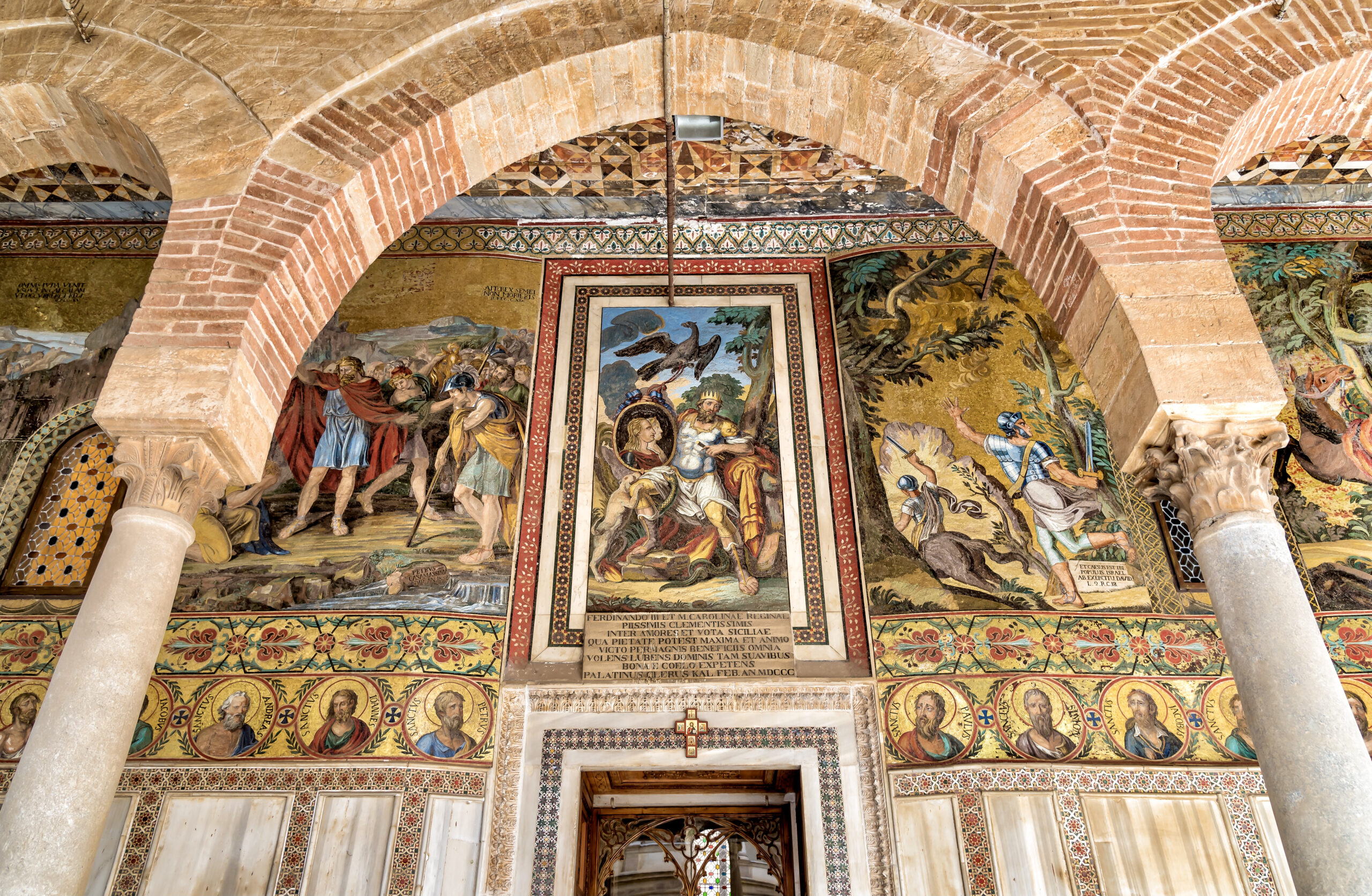
Guide To Palermo's Norman Palace And The Palatine Chapel The Geographical Cure
This palace is the seat of the Sicilian Parliament, one the most important autonomous regional governments in Italy. The construction of the chapel was ordered by Norman King of Sicily Roger II, in 1132, by reusing an old chapel built in 1080 (which, in turn, became a crypt). The chapel was finished between 1140 and 1143.
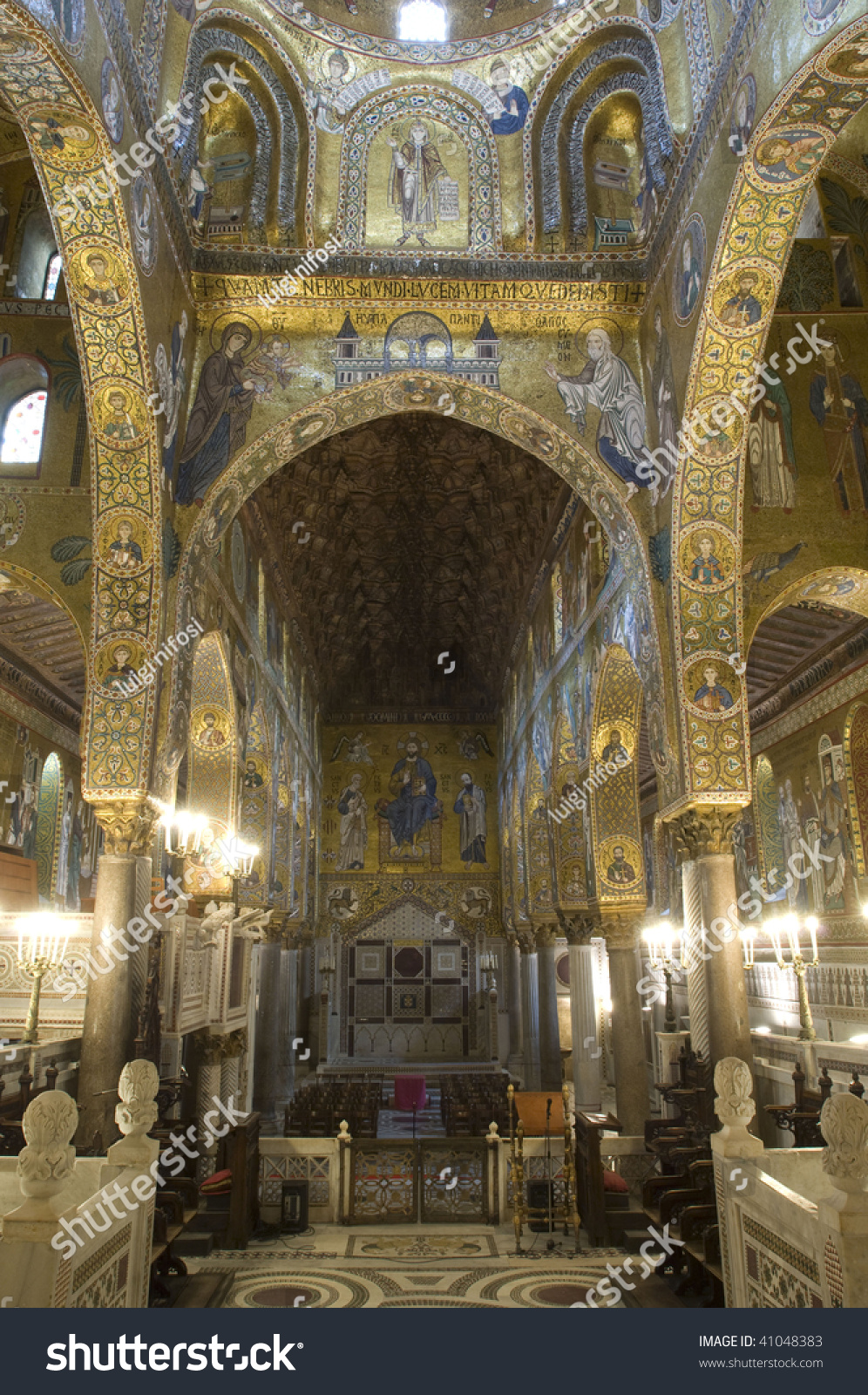
Palermo, Palatina, Chapel, Norman, Castel, Sicily, Italy Stock Photo 41048383 Shutterstock
The Palatine Chapel is a site that alone makes a visit to Palermo worthwhile. Begun in 1130, the year of Roger II's coronation as the first king of Sicily, it was completed in 13 years and consecrated, as an inscription in the dome attests, in 1143. In this church, described by Maupassant as " the most beautiful religious jewel dreamt of by.
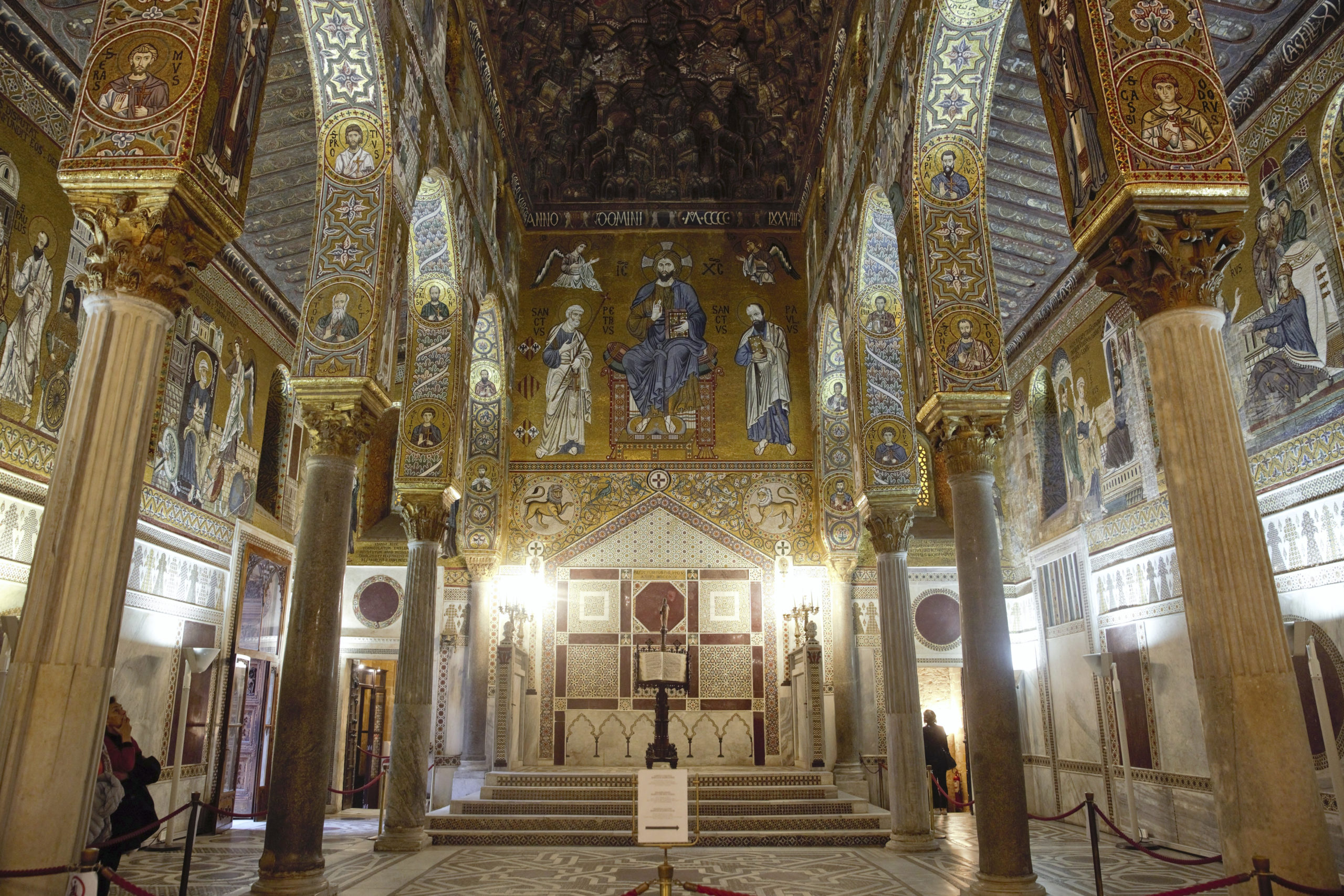
The visual culture of Norman Sicily Smarthistory Guide to Byzantine Art
The chapel was built in 1140 under the kingdom of Ruggero II of Sicily, the result of craftwork from all across the Norman world. The set-up of the chapel mirrors the traditional Roman basilica.
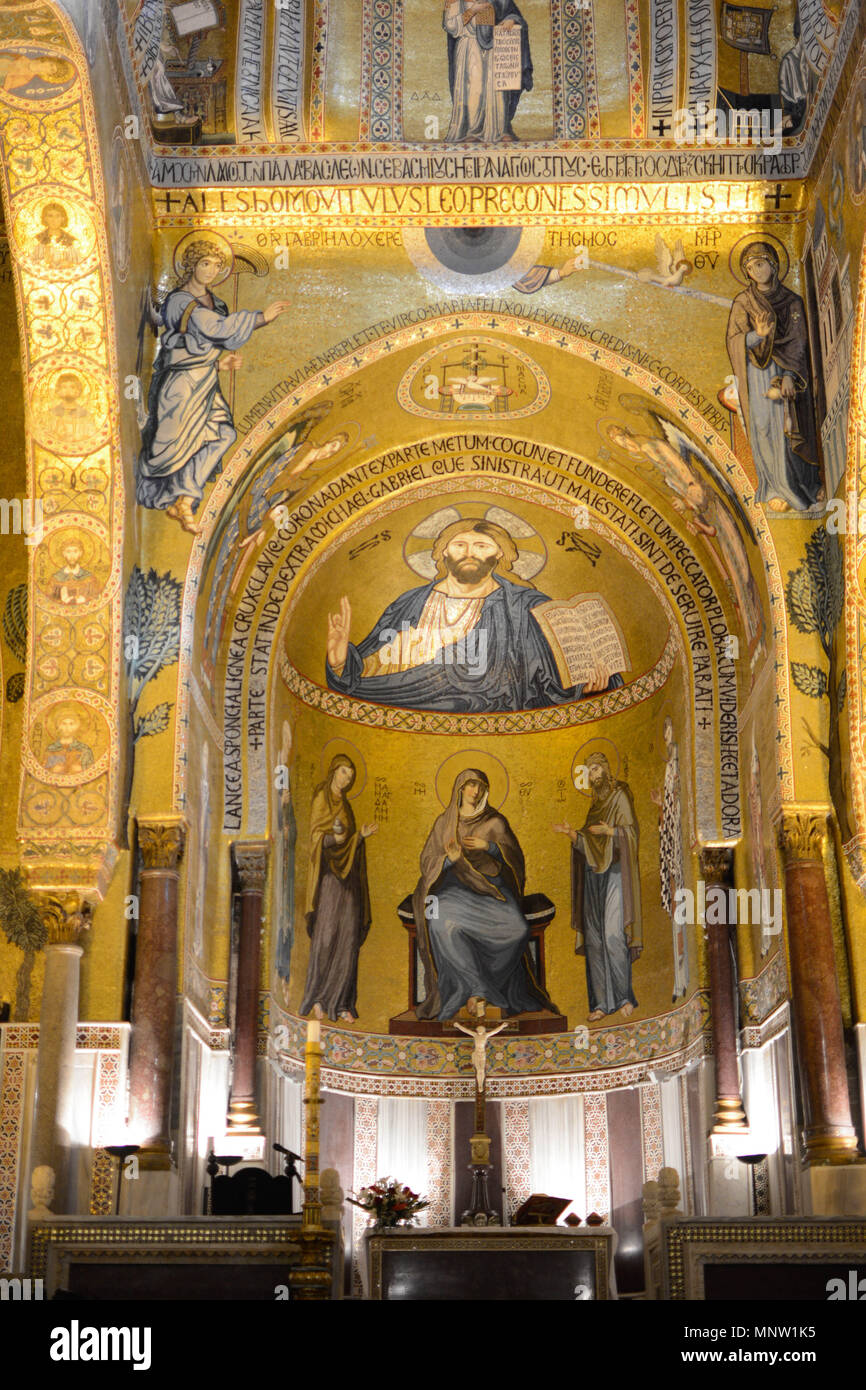
The Palatine Chapel in the Norman Palace in Palermo Sicily Stock Photo Alamy
Opening Times: 8:15-17.40 (last ticket sold 17.00) Monday to Saturday/ Sunday & holidays 8:15 - 13.00 (tickets sold till 12.15)/ No visits to the Palatine Chapel from 9.45 to 11.15 on Sundays and festivities due to religious functions. Address: Piazza Indipendenza, 1 Palermo
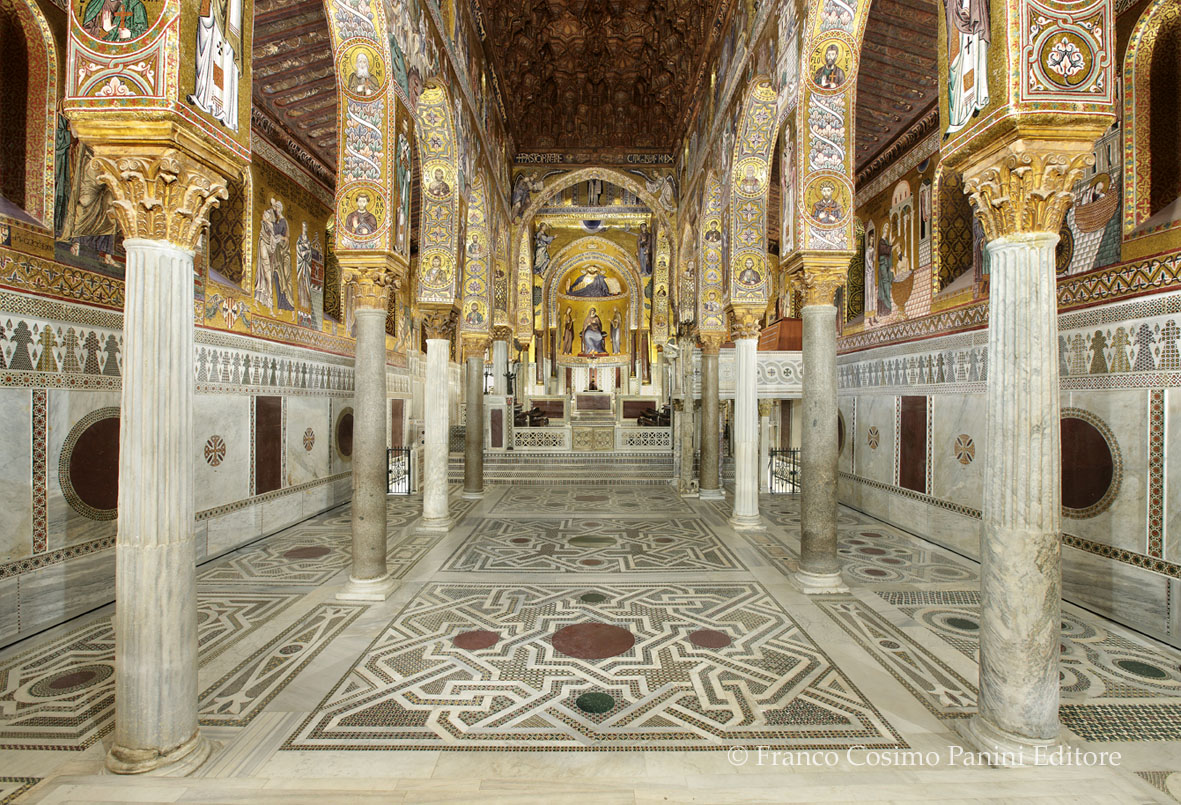
VIAGGIO IN ITALIA IL PALAZZO DEI NORMANNI A PALERMO Folia
The Norman Palace in Palermo, the former seat of the kings of Sicily, is the oldest royal residence in Europe. Its greatest attraction is the Palatine Chapel, where every detail reveals the perfect union among different styles: Latin, Byzantine, Arab — here's where the ancient cultures of the Mediterranean blend to reflect that 'melting pot' that Sicily was in the Middle Ages.
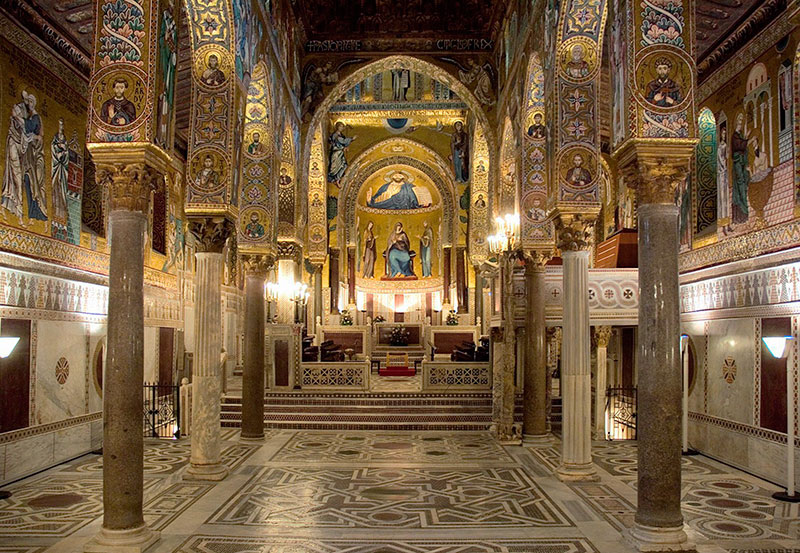
Palatine Chapel Palermo
Norman Palace 7,301 reviews #42 of 524 things to do in Palermo Historic SitesArchitectural Buildings Open now 8:15 AM - 5:45 PM Write a review About Duration: < 1 hour Suggest edits to improve what we show. Improve this listing Tours & experiences Explore different ways to experience this place. See options All photos (5,521) Plan your visit
The ArabNormanByzantine Palatine chapel (Cappella Palatina) of the Palazzo dei Normanni
The Palazzo Reale (Royal Palace) in Palermo, also known as the Palazzo dei Normanni (Palace of the Normans), is one of the most extraordinary buildings in Sicily. It chronicles the history of Palermo from the first Punic settlements to the present day. One of the many halls and rooms that can be visited is the Cappella Palatina (Palatine Chapel).

NORMAN PALACE (PALACE OF THE NORMANS) PALATINE CHAPEL PALERMO SICILY ITALY Stock Photo Alamy
Norman Palace Norman Palace 7,308 reviews #41 of 525 things to do in Palermo Historic SitesArchitectural Buildings Closed now 8:15 AM - 5:45 PM Write a review About Duration: < 1 hour Suggest edits to improve what we show. Improve this listing Tours & experiences Explore different ways to experience this place. See options All photos (5,536)

Cappella Palatina Palatine Chapel Palermo Italy Chapel of Norman Kings YouTube
The Palermo Royal Palace of the Normans is an important building on the edge of the historic centre of Palermo, in northern Sicily Explore the Palermo Royal Palace of the Normans
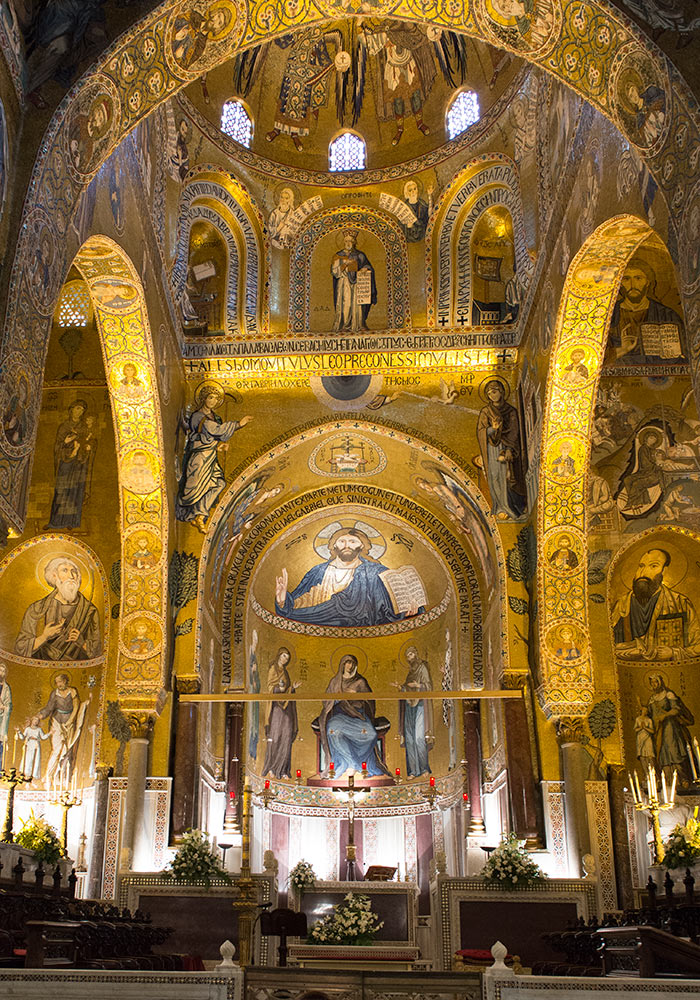
The Norman Palace in Palermo (Palazzo Reale / Palazzo dei normanni) Wonders of Sicily
How to get to the Royal Palace and Palatine Chapel in Palermo. To reach the Royal Palace by car, with attached Palatine Chapel, located between via Vittorio Emanuele and via Maqueda, you have to take the E50 until the exit for Palermo.Continue towards the city center and take Via Calatafimi for about 2 km until you reach the Norman Palace.. From the Central Station, just take the bus lines 318.

Norman Chapel stock image. Image of keystone, church, exterior 2210283
The Palatine Chapel inside Palermo's Royal Palace—once the private chapel of the Norman Kingdom of Sicily—is one of the most breathtaking and important attractions in the city. The chapel seems to glow in a golden light, reflected by the ornate mosaics that cover its interior and are considered among the best in Italy. Learn more